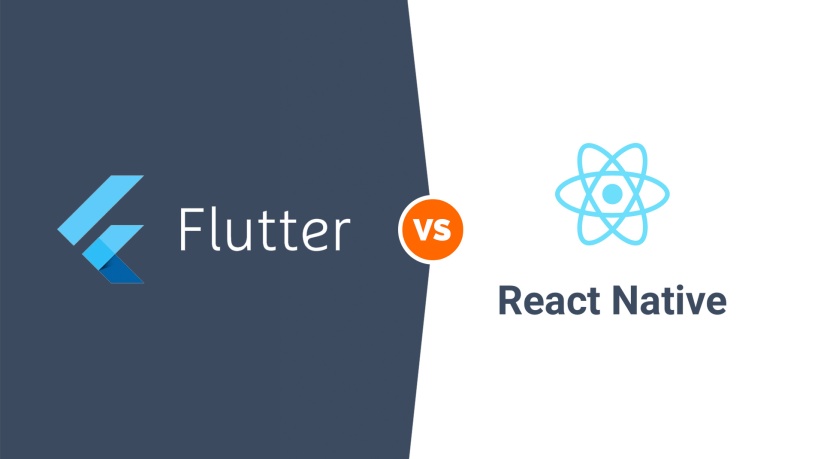Introduction
React Native and Flutter are the most popular cross-platform mobile app development choices. It makes it very difficult for developers to choose between the two. Both React Native and Flutter have their pros and cons, which we will discuss in this article in detail. You will learn about both platforms individually and decide which meets most of your requirements.
Flutter is an open-source project that Google created in 2016. It’s a framework for building native apps for Android and iOS using a single codebase. Flutter uses a custom UI framework called Material Design to create beautiful native apps that feel like they were written in Objective-C or Swift. You can also use any existing native widgets from Android or iOS or create your own from scratch using Flutter’s powerful widget library.
React Native is also an open-source project created by Facebook in 2015. It enables developers to build mobile applications using only JavaScript and ReactJS components, making sharing code between their web applications and mobile app projects easier. Unlike Flutter, React Native web does not use a custom UI framework; instead, it uses the same styles as Android or iOS with minor modifications such as font sizes and margins (which means you may need to download additional plugins).
So if you want to develop a mobile app, you have two options: Flutter and React Native. Both of these tools are Javascript-based, allowing for the same rapid development as other JavaScript frameworks like Angular, Vue, or Ember. They also rely on hot reloading, allowing developers to see changes made to their code in real-time without restarting the program or reloading their browsers. However, some significant differences between the two tools make them better suited for different projects.
Flutter vs. React Native: Which One to Choose?
React Native App Development- An Overview
- React Native is a JavaScript library developed by Facebook that allows developers to build native apps for iOS and Android.
- It is based on the same design principles as React.js, which enables developers to create reusable UI components.
- React Native also makes testing and debugging your code easy because it has a development server and hot reloading features.
Flutter App Development Overview
- Flutter is an open-source mobile app SDK developed by Google that helps developers build high-quality native apps for Android and iOS using the Dart language.
- Flutter uses Skia as its default rendering engine, similar to Android’s rendering engine called Canvas 2D.
- Flutter also allows developers to port their code from existing Java/Kotlin/Objective-C code bases into Dart code without having any issues related to syntax or bug fixes in their existing code base.
React Native vs. Flutter: Which is better?
Both React Native and Flutter are cross-platform mobile app development frameworks.
Both are open source, with many contributors from the community. Both use a declarative approach to building user interfaces, which means you can use a markup language or write code in your preferred language (JavaScript or Dart) to describe how your UI should look at runtime instead of hard coding it in platform-specific languages such as Java or Swift.
Let’s now have a look at Flutter vs. React Native performance:
React Native
- React Native was launched by Facebook in 2015 and has been growing steadily since then. It is a cross-platform mobile application development framework for iOS and Android platforms.
- React Native is based on JavaScript and is used to develop iOS and Android applications. It uses the same code for all the native components like Camera, Gallery, Text Inputs, and other UI elements.
- React Native is a cross-platform framework for building native applications with React, unlike Flutter, a new mobile app SDK that helps developers and designers build modern mobile apps for iOS and Android.
- React Facebook, Instagram, Airbnb, and Uber have used Native. React Native has more than 1 million active developers on GitHub.
- React Native supports only one platform (Android), while Flutter supports Android and iOS platforms.
Flutter
- Flutter app development is a cross-platform mobile app development framework that Google builds. It helps developers create high-quality native apps for Android and iOS. React Native is a JavaScript library created by Facebook to build native iOS and Android apps.
- Flutter is a new open-source mobile app SDK from Google that helps you build high-quality apps for iOS and Android from a single codebase. It lets you write code in Dart language, which compiles native ARM code that runs on Android or iOS. Unlike React Native, it uses no JavaScript libraries or DOM manipulation.
- Flutter uses Dart as its primary programming language, while React Native uses JavaScript. Dart is a language developed by Google to make it easier for programmers to write web applications.
- Flutter uses its layout system, meaning developers do not need to worry about writing code for views or layouts, unlike React Native, where developers must manually write their views and layouts in JavaScript.
Flutter vs React Native Popularity
Flutter is an open-source Google project for creating fast and expressive cross-platform mobile apps. Flutter is a free download from Google, licensed under Apache 2.0, and maintained by the core team at Google. React Native, on the other hand, is licensed under the MIT License. There are also many open-source libraries for React developed in JavaScript.
Flutter is a new mobile UI framework by Google that can be viewed as a competitor of React Native. There are some significant differences between these two. Flutter uses dart programming language, and React Native uses JavaScript. Flutter UI elements do not depend on browser compatibility, but React Native’s UI elements depend upon browser compatibility. If you intend to build a mobile app that only needs basic UI and the development is on a small budget, Flutter will be your option.

